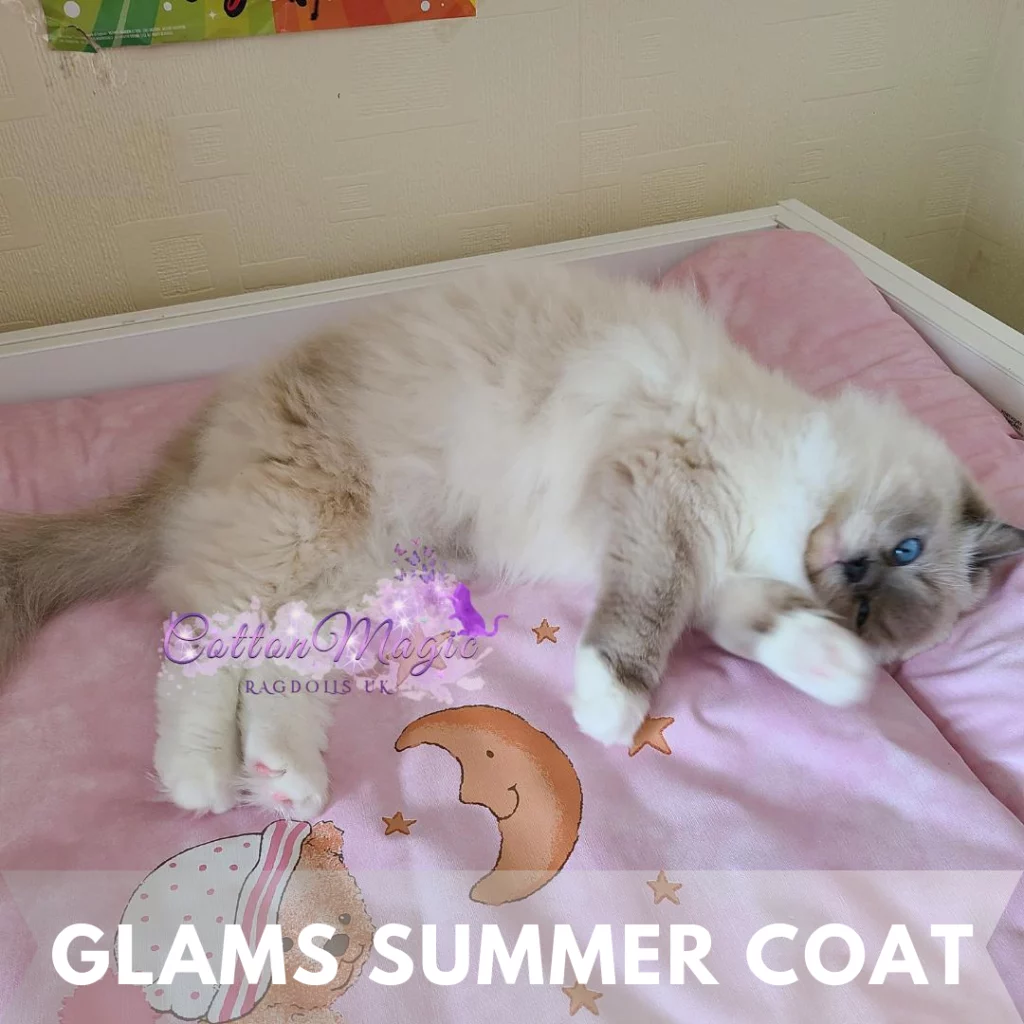Colors:
Ragdoll cats exhibit a range of beautiful colors, including:
- Seal: A rich, dark brown color with contrasting lighter points.
- Chocolate: A warm, chocolate brown color with lighter points.
- Lilac: A pale, muted lavender color with lighter points.
- Blue: A soft, bluish-gray color with lighter points.
- Cream: A light, creamy color with lighter points.
- Red: A vibrant, reddish-orange color with lighter points.






How Can I Tell What Color My Ragdoll Kitten Is?
Color-pointed breeds, such as Ragdolls, develop their colors later in life due to the point gene’s response to warmth. Point kittens are born white. Seal and Blue variations can be identified within days, while determining chocolate and lilac hues may take 3-4 weeks. By 8-12 weeks, all colors are fully visible, yet Ragdoll patterns and colors continue to evolve for 2-3 years.
The seal point is the iconic color for Ragdoll cats, rooted in their captivating history. Josephine, the first Ragdoll, was a seal point, and all Ragdolls today trace their lineage back to her. The standard Himalayan colors for Ragdolls include seal, chocolate, lilac, and blue, while cream and red add further variety to their stunning palette.
Patterns:
Ragdolls exhibit a variety of distinctive patterns, each with its own unique characteristics:
- Colorpoint Pattern: This pattern showcases a lighter body color paired with darker points on the face, ears, paws, and tail. The contrast between the body and the points draws attention to their enchanting blue eyes.
- Mitted Pattern: The Mitted pattern features darker points on the ears, face, and tail, accompanied by a white chin. Additionally, Ragdolls with this pattern have white mittens on their front paws and boots on their hind legs, adding an extra touch of charm.
- Bicolor Pattern: The Bicolor pattern displays a predominantly white body with distinct patches of color on the ears, back, and tail. One of the most striking features of Bicolor Ragdolls is the inverted “V” shape on their face. Their captivating blue eyes shine against the white backdrop, while their nose remains pink. Some bicolors may have color on their front legs, resembling a t-shirt.
- Lynx (Tabby) Pattern: Also known as the Tabby pattern, the Lynx pattern introduces delicate striping or “tabby markings” within the color points. These markings can be observed on the face, body, and occasionally on the tail, enhancing the Ragdoll’s appearance with a touch of wild beauty. The combination of the Lynx pattern and the Ragdoll’s gentle temperament creates a captivating contrast.
- Tortie and Torbie: The Tortie (Tortoiseshell) and Torbie (Tortoiseshell Tabby) patterns bring forth a stunning mosaic of different colors within the coat. These patterns incorporate patches of black, brown, red, or cream, resulting in a truly unique work of art for each Tortie or Torbie Ragdoll.
The various patterns in Ragdoll cats contribute to their overall beauty and individuality, making them a beloved and sought-after breed.


When Do Ragdolls Get Fluffier?
The fluffiness of a Ragdoll cat’s coat is influenced by temperature. During the colder winter months, Ragdolls develop a thicker and more voluminous winter coat to keep them warm. As the warmer summer months arrive, they naturally shed their winter coat, resulting in a lighter and sleeker summer coat. This seasonal change in their coat helps them adapt to different weather conditions throughout the year.
Copyright by CottonMagic Ragdolls
